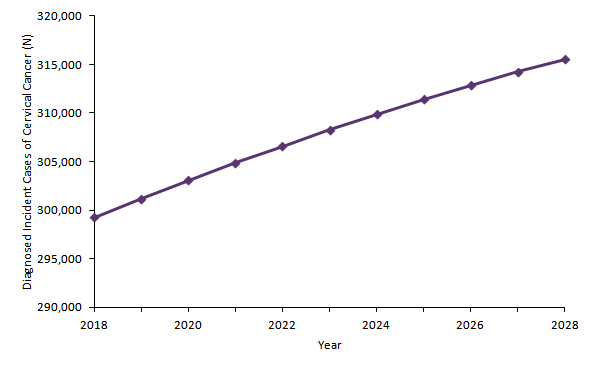January is designated as Cervical Health Awareness Month, meant to highlight cervical cancer and human papillomavirus (HPV) infection.
Cervical cancer occurs when cells in the cervix grow out of control; the most common cause of the cancer is HPV. HPV is a common sexually transmitted infection that usually goes away on its own, but certain strains can lead to cervical cancer. Cervical cancer is most often diagnosed in women between the ages of 35 and 44 years. GlobalData epidemiologists estimate that there were approximately 300,000 diagnosed incident cases of cervical cancer in the sixteen major markets (16MM: US, France, Germany, Italy, Spain, UK, Japan, Australia, Brazil, Canada, China, India, Mexico, Russia, South Africa, and South Korea) In 2018, which are expected to increase to over 315,000 cases by 2028 at an Annual Growth Rate (AGR) of 0.51%.
In the US, the five-year survival rate of cervical cancer is estimated to be approximately 66%. If cervical cancer is detected early, the five-year survival rate is significantly higher, at 92%. Cervical cancer is highly preventable in most countries where screening tests and the HPV vaccine are available. In the US, the HPV vaccine has been available since 2006 and is recommended for both boys and girls at age 11 to 12 years. Current prevention efforts focus on screening, vaccination, and testing, including Pap and HIV tests. Early preventative measures, such as the HPV vaccine, can greatly reduce the risk of cervical cancer.




